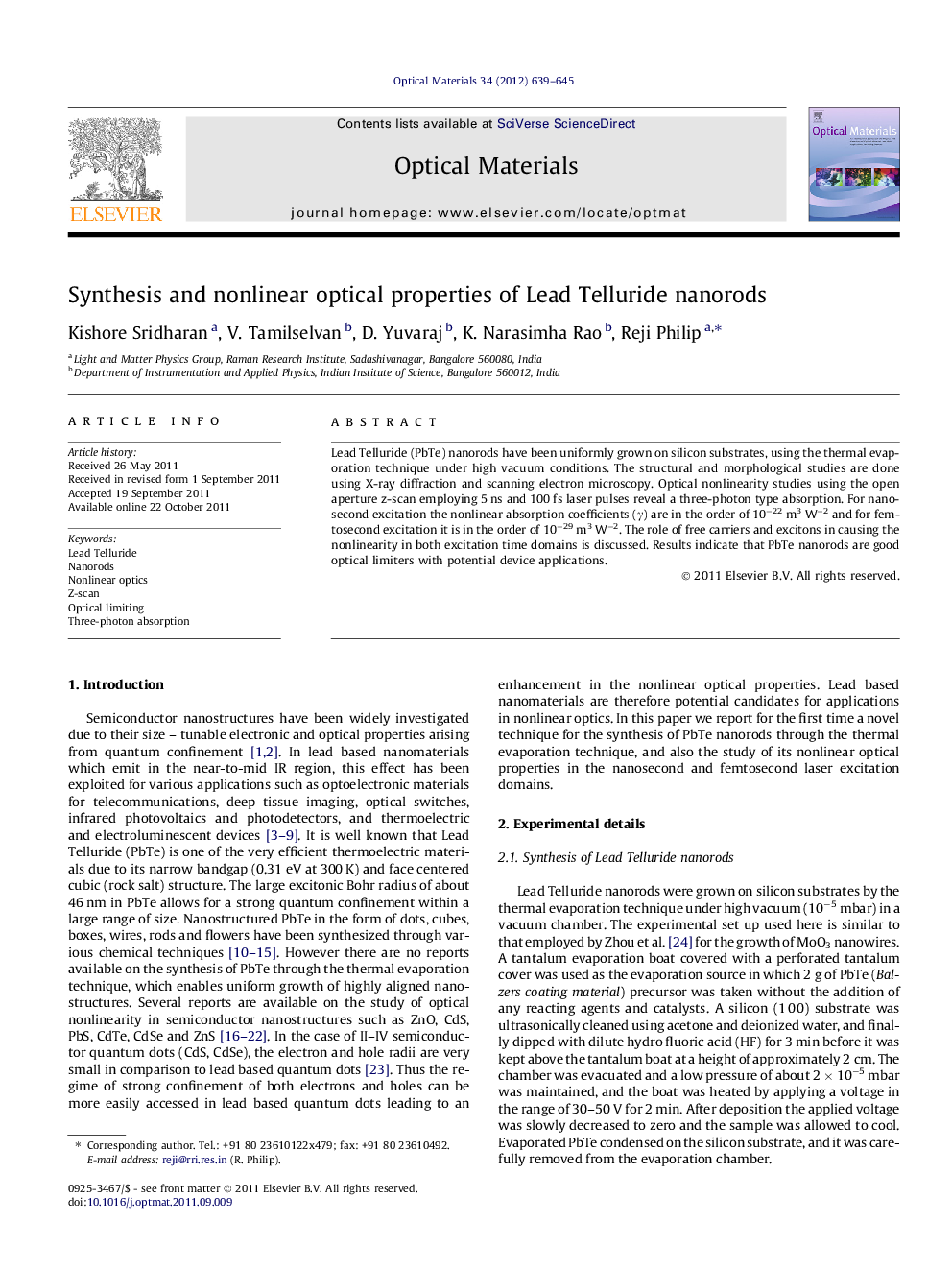| Article ID | Journal | Published Year | Pages | File Type |
|---|---|---|---|---|
| 1495421 | Optical Materials | 2012 | 7 Pages |
Lead Telluride (PbTe) nanorods have been uniformly grown on silicon substrates, using the thermal evaporation technique under high vacuum conditions. The structural and morphological studies are done using X-ray diffraction and scanning electron microscopy. Optical nonlinearity studies using the open aperture z-scan employing 5 ns and 100 fs laser pulses reveal a three-photon type absorption. For nanosecond excitation the nonlinear absorption coefficients (γ) are in the order of 10−22 m3 W−2 and for femtosecond excitation it is in the order of 10−29 m3 W−2. The role of free carriers and excitons in causing the nonlinearity in both excitation time domains is discussed. Results indicate that PbTe nanorods are good optical limiters with potential device applications.
Graphical abstractFigure optionsDownload full-size imageDownload high-quality image (132 K)Download as PowerPoint slideHighlights► PbTe nanorods are synthesized by the thermal evaporation technique. ► Nanorods grow uniformly with a single crystalline nature. ► Nonlinear optical properties are studied using the z-scan technique. ► z-Scans are done both in the nanosecond and femtosecond excitation domains. ► PbTe nanorods exhibit good optical limiting indicating device applications.
